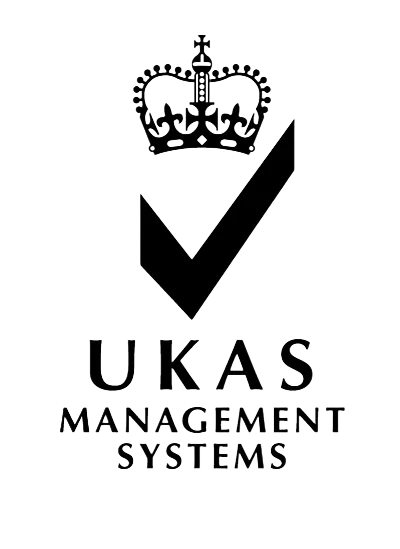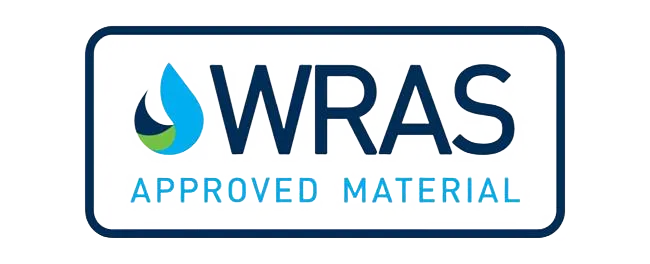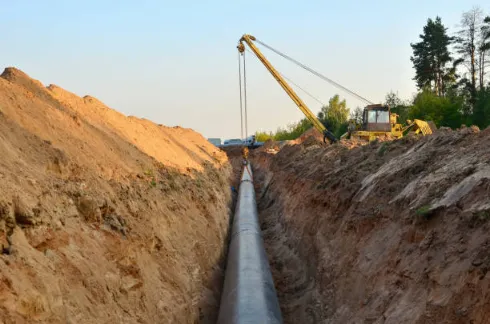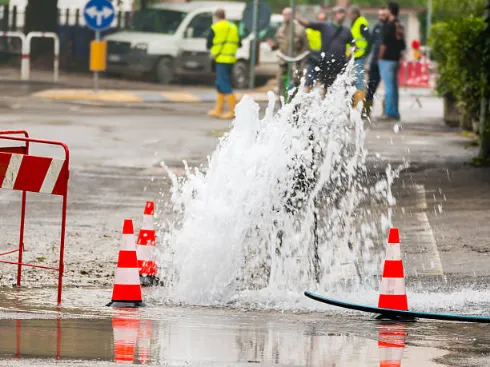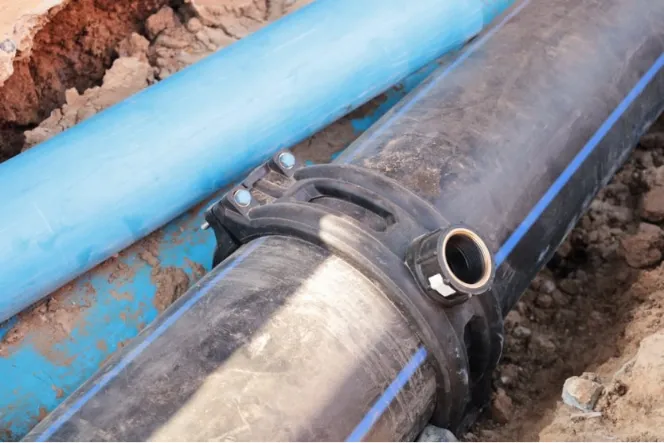Aperçu des matériaux de tuyaux en fer ductile et en acier
Caractéristiques clés du tuyau de fer ductile
Les tuyaux en fer ductile sont fabriqués en mélangeant du fer chaud avec du magnésium pur avant de le former en tuyaux. Cela rend le tuyau de fer ductile vraiment pliable et dur. Le graphite à l’intérieur forme de petites boules, pas de morceaux floquants comme dans l’ancienne fonte, de sorte qu’il ne se casse pas facilement. Les tuyaux en fer ductile peuvent durer plus de 100 ans car ils sont super forts, sûrs et élastiques. Ils sont généralement doublés de mortier de ciment à l’intérieur et revêtus de zinc et de bitume à l’extérieur pour éviter la rouille.
Caractéristiques communes des tuyaux en acier dans les applications industrielles
Les tuyaux en acier sont fabriqués en acier inoxydable, en acier au carbone ou en acier allié. Ils sont préférés pour les systèmes pétroliers, gaziers et d’eau haute pression parce qu’ils sont vraiment forts et ne se plient pas hors forme. Les tuyaux en acier sont fabriqués par laminage ou soudage, selon leur taille.
Différences dans la composition et les processus de fabrication
Les tuyaux en fer ductile et en acier sont tous deux durs, mais ils sont construits différemment. La tuyauterie en fer ductile a du graphite en forme de boule qui le rend flexible. L'acier est principalement du fer mélangé au carbone, et parfois du chrome ou du nickel pour arrêter la rouille. Pour les grands tuyaux de plus de DN600, les plaques en acier sont laminées et soudées. Les plus petits sous DN600 sont généralement laminés à chaud.
Résistance mécanique et performances
Comparaison de la résistance à la traction et de la durabilité
Les tuyaux en fer ductile vs tuyaux en acier ont toutes deux une grande résistance et durent longtemps. Le fer ductile a besoin d'au moins 60 000 psi de résistance à la traction, 42 000 psi de résistance au rendement et d'allongement de 10%. L'acier a généralement une résistance à la traction plus élevée, mais ne s'étire pas autant que les tuyaux en fer ductile.
Classifications de pression dans les systèmes d'eau, de gaz et de pétrole
La tuyauterie en fer ductile gère les sauts de pression soudains comme un pro, c'est donc génial pour les systèmes d'eau. La résistance supplémentaire de l’acier le rend meilleur pour déplacer le gaz ou l’huile sous haute pression.
Performance sous charge lourde et mouvement au sol
La tuyauterie en fer ductile est vraiment fraîche pour les intempéries difficiles ou le sol tremblant. Son graphite en forme de boule lui permet de se plier un peu sans se casser, ce qui est excellent lors de tremblements de terre ou de déplacements de sol. L'acier est super fort lorsqu'il est tiré, mais il peut ne pas gérer les secoussements constants aussi bien à moins qu'il ne soit bien soutenu.
Résistance à la corrosion dans divers environnements
Résistance à la corrosion externe des tuyaux en fer ductile
Un enveloppement en polyéthylène résistant circule autour du tuyau en fer ductile pour arrêter la rouille. De plus, les revêtements de mortier de ciment à l'intérieur empêchent l'eau de causer la rouille.
Méthodes de protection contre la corrosion interne pour les tuyaux en acier
Les tuyaux en acier sont revêtus de produits tels que la résine époxy ou la galvanisation pour lutter contre la rouille. Cela les aide à rester forts même dans des conditions difficiles.
Impact des conditions du sol et de l’eau sur la durabilité à long terme
Le sol acide peut manger les deux matériaux. Dans les endroits difficiles comme les plages ou les zones d’usines, les couches supplémentaires de tuyauterie en fer ductile le rendent plus durable si bien revêtu.
Installation, entretien et longévité
Facilité d'installation pour les tuyaux en fer ductile vs tuyaux en acier
La tuyauterie en fer ductile a des couplages push-fit qui facilitent le changement de trajets de tuyauterie. Cela donne aux travailleurs beaucoup de flexibilité sur place. Les tuyaux en acier ne sont pas de sueur à installer avec quelques personnes et les bons outils, surtout si vous pouvez souder sur le site. Pour une aide supplémentaire avec des vannes ou des pompes, les joints Conflex Démontage des articulations vous permet de régler les tuyaux sans gâcher le système.
Exigences d'entretien au cours du cycle de vie
La tuyauterie en fer ductile nécessite moins de fixation parce que sa doublure résiste à la rouille. Les tuyaux en acier nécessitent des contrôles réguliers, en particulier aux joints où la rouille pourrait commencer.
Durée de vie prévue dans les projets municipaux et industriels
Les tuyaux en fer ductile peuvent durer plus de 100 ans, surtout avec de bonnes doublures. Les tuyaux en acier galvanisé durent généralement de 20 à 50 ans, selon l'endroit où ils sont utilisés.

Facteurs de coûts et implications budgétaires
Matériel initial et coûts de fabrication
Les tuyaux en acier coûtent généralement moins cher au début que les tuyaux en fer ductile. Mais vous devez penser aux coûts de réparation lors du choix.
Coûts opérationnels à long terme : réparations et remplacements
La longue durée de vie, la ténacité et la résistance à la rouille du tuyau en fer ductile le rendent moins cher au fil du temps. Fixer un seul tuyau en fer ductile est beaucoup plus facile que d'échanger un système entier. Utiliser des trucs comme Conflit Joints le démantèlement des joints permet de réparer rapidement et de réduire les temps d'arrêt.
Analyse de valeur pour les projets d'infrastructure à grande échelle
Pour les projets d'eau urbaine où la durabilité est plus importante que le coût initial, la tuyauterie en fer ductile est souvent le meilleur choix. Il est fort, pliable et lutte bien contre la rouille, en particulier avec des joints modernes comme les accouplements flexibles de Conflex Joints ou les adaptateurs de bride.
Résumé Comparaison: Métrices de performance des tuyaux en fer ductile vs tuyaux en acier
Analyse du rapport force/poids
L'acier a une résistance plus élevée pour son poids, mais les tuyaux en fer ductile peuvent supporter des chocs sans fissurer. Cela le rend idéal pour les endroits avec tremblement ou le terrain en mouvement.
Ratings de résistance à la corrosion selon les normes de l'industrie
La tuyauterie en fer ductile lutte naturellement contre la rouille en raison de son mélange fer-carbone. Avec des doublures, il fonctionne mieux que les tuyaux en acier réguliers contre la rouille de l'eau à l'intérieur ou du sol à l'extérieur.
Économie dans les scénarios d'ingénierie réels
Dans des projets tels que les lignes d’eau urbaines où la fiabilité à long terme est une grande affaire, les besoins de réparation plus faibles des tuyauteries en fer ductile en valent la peine pour un coût de départ plus élevé.
Questions fréquemment posées
Quel est le principal avantage de l'utilisation de tuyauterie en fer ductile par rapport à l'acier?
La tuyauterie en fer ductile lutte mieux contre la rouille grâce à sa doublure de mortier en ciment et à ses revêtements tels que le zinc ou le polyéthylène. Cela l’aide à durer plus de 100 ans dans de nombreux projets.
Puis-je utiliser des tuyaux en fer ductile dans les systèmes de transmission de gaz?
Non, les tuyaux en fer ductile sont idéaux pour les lignes d'eau, mais les systèmes de gaz ont besoin d'une résistance à la pression plus élevée, donc l'acier est le choix habituel.
Est-il plus facile d'installer des tuyaux en fer ductile que de l'acier?
Vous pariez que les joints push-fit sur le fer ductile rendent le rangement des tuyaux plus facile que le soudage des tuyaux en acier. Cela permet de gagner du temps sur les gros emplois.
Comment l'état du sol affecte-t-il mon choix entre ces deux matériaux?
Dans les sols acides ou salés, les tuyaux en fer ductile fonctionnent mieux avec leurs revêtements. L'acier peut rouiller plus rapidement à moins que vous n'utilisez de l'acier inoxydable cher.
Existe-t-il des solutions personnalisables pour les connexions complexes de pipelines ?
Totalement ! Conflex Joints Customization Service propose des solutions de connexion de tuyauterie sur mesure, telles que le démantèlement des joints, conçues spécialement pour les besoins de votre projet.
Si vous voulez des solutions de pipeline robustes qui équilibrent les performances et les coûts pour des choses comme les systèmes d'eau, le pétrole et le gaz ou les usines chimiques, consultez Conflex Joints!


